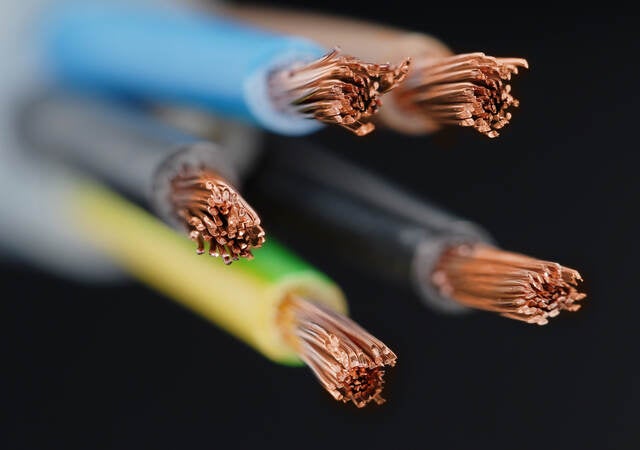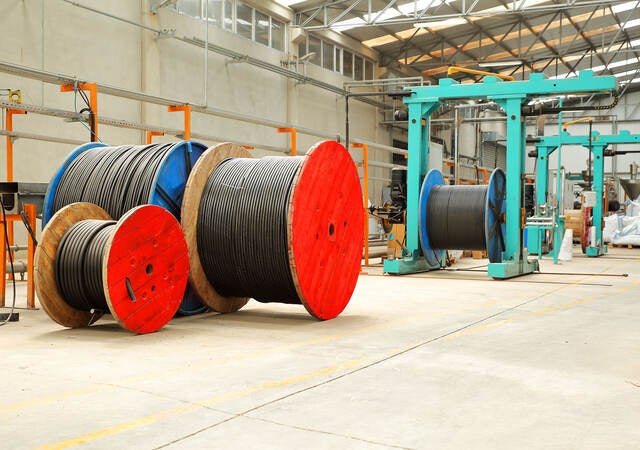Two dynamics currently exist within the U.S. wire and cable industry: large new market opportunities and, at the same time, a growing shortage of skilled labor to meet the demand. There are huge opportunities surrounding re-electrification, increased renewable energy generation and distribution, and the rapid growth of data centers. However, with the persistent shortage of skilled engineering and manufacturing labor, manufacturers often struggle to meet these demands in a profitable way.
The good news is that options already exist to help wire and cable manufacturers meet these challenges, increase staff productivity and efficiency, capture and retain vital company knowledge, and reduce cable design and manufacturing errors.
Read this article from UL Solutions to learn more about the factors and trends contributing to the skilled labor shortage, promising areas of growth for the wire and cable industry, and software that can help manufacturers capitalize on these growth opportunities.
Overcoming the skilled labor shortage in wire and cable manufacturing with CableBuilder
As reported by many U.S. wire and cable manufacturers in recent months, there is a major shortage of skilled labor in the industry across the U.S. and Europe. Some experts anticipate a shortage of 400,000 manufacturing personnel in the U.S. in 2024. Such shortages have been created by a combination of factors. One contributing factor is the high rate at which companies have been eliminating manufacturing jobs in recent years. An estimated 1.4 million workers lost their manufacturing jobs in the U.S. during the pandemic.
Another contributor to the skilled labor shortage is the shifting level of work experience across the industry. At top wire and cable manufacturers, senior engineers are retiring in large numbers, and junior engineers are often recruited to replace them. One industry expert estimated that one junior engineer is recruited for every two senior engineers lost. The relatively high turnover rate of newly recruited junior-level employees further impacts this flux.
The influx of junior-level employees often brings about shifts in work culture. The preference for digital solutions and demands for a four-day workweek and flexible working hours, for example, can create fragmented information-sharing and shift handovers between staff. Some manufacturers respond to this pressure by asking staff what hours they can work and adjusting operating hours where needed.
The staff recruitment and retention challenges that top wire and cable manufacturers face can lead to more frequent unplanned machine stoppages, valuable knowledge leaving the business and poorer product quality.
Growth opportunities for the wire and cable industry
In spite of the challenges that skilled labor shortages create, the wire and cable industry is primed for growth. Reshoring the supply chain and investing in domestic energy production as part of deglobalization create opportunities for U.S. wire and cable manufacturers — if they can meet market demands.
For example, as the U.S. energy sector moves away from fossil fuels, the often-fragile energy grid urgently needs re-electrification to meet the rapidly growing demand for electricity. The Inflation Reduction Act, passed in 2022, has only accelerated the urgency. Europe is also experiencing this pressing need, driven by market demands and steep government decarbonization targets. For example, the adoption of hybrid and electric vehicles (EVs) has grown rapidly, as has the supporting infrastructure.
Significant opportunities also exist around the continued development of a growing number of data centers for cloud storage, offshore and solar energy production, and connecting homes with fiber to the home (FTTH).
Skilled labor shortages and market opportunities are here to stay
According to experts at Interwire 2023, these challenges and opportunities that U.S. wire and cable manufacturers face are expected to increase over the long term. Furthermore, the increased demand for copper and aluminum will likely raise metal prices, creating an acute need for manufacturers to control and monitor costs. Manufacturers must prepare now.
The augmented and connected worker: Technology as an aid to the labor force and manufacturing process
Some manufacturers use technology to help bridge the gap caused by the shortage of skilled labor — not by turning over the cable design and manufacturing process to artificial intelligence (AI), but by using the power and speed of technology to prompt, support and run checks for existing staff.
Market trends drive the need for manufacturers to systematize knowledge so they can move away from their heavy reliance on key individuals to communicate necessary technical information, toward distributed decision-making and providing real-time information across the whole enterprise. This requires first digitizing data and transitioning away from paper-based processes and then integrating data systems.
Doing so allows manufacturers to build processes that effectively turn tenured employees’ experience into digital information and react more quickly to manufacturing variances, thereby helping manufacturers increase speed to market. These integrated data systems become assets the business can continue to build upon, adapt and improve over time.
Increasing staff efficiency with CableBuilder cable design software
Cable design software can be an indispensable tool in helping cable and wire manufacturers optimize their efficiency amid increased market demands and labor shortages. CableBuilder software from UL Solutions has helped increase wire and cable engineers’ efficiency and productivity for decades.
In a survey across CableBuilder customers, 74% stated that CableBuilder helped improve staff productivity and efficiency. When asked how they achieved this, many survey responses centered around speeding up and standardizing processes, facilitating all team members’ access to a single system, and providing the ability to apply mass design changes. Customers cited that CableBuilder:
- Optimized the request-for-quote (RFQ) process and reduced work hours spent on quoting.
- Streamlined the process of collecting and sharing data with operators.
- Eliminated manual work by creating rules and formulas to standardize cable designs.
- Reduced cable design time and human error with centralized cable criteria.
- Enabled more sales staff to generate quotes.
Reducing data errors in the cable design and manufacturing processes
Sixty-six percent of CableBuilder customers also indicated that the system has helped reduce the number of data errors in their cable design and manufacturing processes.
Respondents stated that developing a verified database helped prevent repetitive errors. Others expressed that applying a formula to relevant products helped them solve the problem of forgetting to update specific documents when something changes.
How CableBuilder can help you navigate the challenges caused by a shortage of skilled labor
UL Solutions can help you understand how to design and manufacture with fewer people, in less time and with fewer errors. We can review your design processes and provide you with a detailed analysis of your current processes and how you can improve them with CableBuilder.
Contact us to discuss CableBuilder and the support we can provide you and your staff.
Get connected with our sales team
Thanks for your interest in our products and services. Let's collect some information so we can connect you with the right person.



